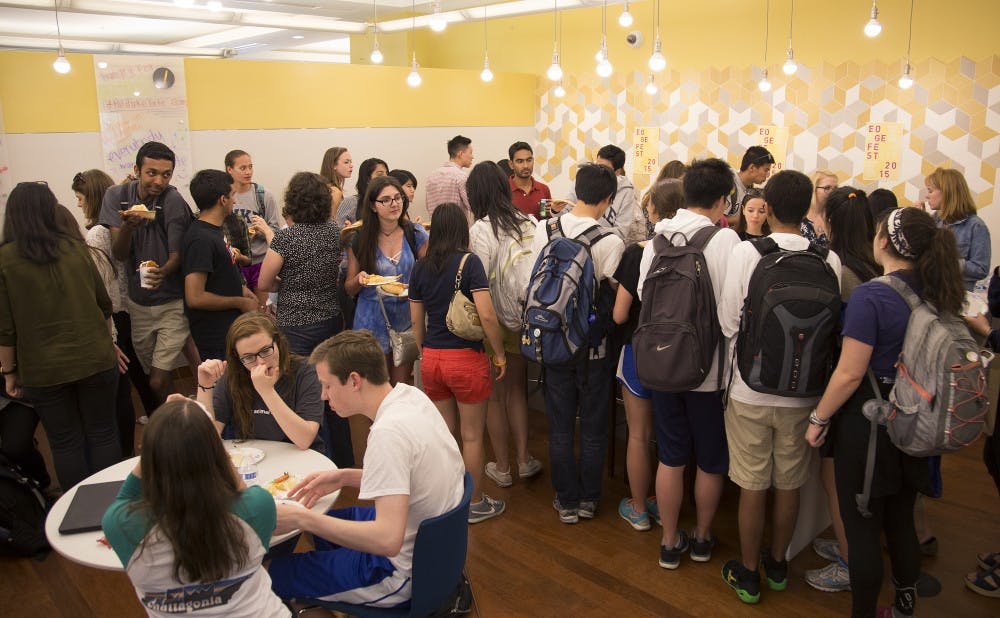The Artstigators, Duke University Libraries, Spoon University-Duke and the Bite hosted a celebration of creativity this past Thursday evening in The Edge, the recently refurbished first floor of Bostock library. Held between five and 10 p.m., the event showcased campus arts and the Edge’s spacious design and unique characteristics that provide a comfortable location for thought and connection.
The Edge stands out with its writeable walls: nearly all its periphery and support columns covered in dry-erase board material. In the words of freshman Quinn Steven, the Edge truly is “a collaborative study space.”
Global Health department head, Laura Bey, foresaw The Edge as an opportunity to showcase personal art and expression. Upon hearing about the library’s new facilities, Bey planted a seed in her library friends’ minds, which they ran with to create EdgeFest. The Edge’s walls reminded Bey of masalas, Tibetan sand paintings. Moreover, Tibetan painters slave timelessly away at their paintings, immersing themselves in the work. When finally completed, they take a brush and wipe the sand clean. Instead of using the free wall space to crunch formulas or layout papers, as students often do, Bey proposed students fill the Edge’s walls with art, doodles and random thoughts, with full knowledge they would be wiped clean indiscriminately at the end of the day.
Most of the wall space was free for individual student use. Students of varying artistic abilities decorated and colored on the walls which were labeled: “RESERVED: FOR OPEN USE”. The atmosphere created by free speech and drawing was contagious.
The Library Staff did reserve certain walls for campus and university groups. The David M. Rare Book and Manuscript Library, located on the third floor of the library, depicted colorful and intricate drawings of old medicine book covers. With their evocative imagery, the medicine book covers told stories of loss, recovery, triumph and, occasionally, sexuality. Rubenstein’s Head curator, J. Andrew Armacost, chose medicine books because of their visual appeal and comparatively easy-to-draw patterns, although, according to Armacost, he had been working all day.
Student groups also received sections of wall space. Duke University Arts Union filled a large rectangle, gathering a large crowd by handing out coffee mugs, laptop decals and other promotional giveaways. Duke Feminism decorated their large column with varied definitions of feminism. The Standard, a student magazine, filled a large rectangle with an eye-catching display.
The event was advertised widely on Facebook and other social media, arguably contributing to the amazing turn out. Food provided from popular names like Monuts, Fosters and Cupcake Bar drew a large crowd. The line for food extended through the lobby and out the door.
An hour into Edgefest, a series of performers took to the floor in the Edge’s “lounge”, its most spacious room, which has numerous chairs, tables and couches for listeners to sit. Inside Joke started the show, performing several sketches that created a jovial atmosphere using their usual cutting satire and references to pop culture. Also featured at EdgeFest were the #BusStopGuy, Duke University Improv, the cup stacking champion, student a capella groups and many more student artists. Through the diversity of many different artistic mediums, EdgeFest provided a respite from the intense scholasticism typically associated with libraries.
Get The Chronicle straight to your inbox
Signup for our weekly newsletter. Cancel at any time.

